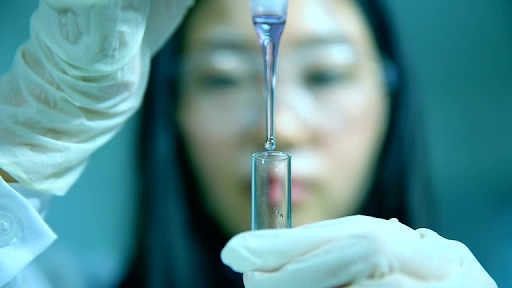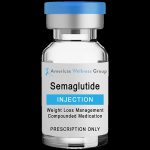In the intricate world of healthcare, the demand for precision, safety, and reliability cannot be overstated. Among the myriad of materials that play crucial roles in medical applications, polytetrafluoroethylene (PTFE) tubing stands out as a remarkable innovation. This versatile material has garnered significant attention in medical settings for its unique properties and outstanding performance. From catheterization to fluid transfer, PTFE medical tubing is revolutionizing the way healthcare professionals approach patient care. In this article, we will explore the numerous benefits of PTFE medical tubing and why it is becoming an indispensable component in modern medicine.
What is PTFE Medical Tubing?
PTFE, commonly known as Teflon, is a high-performance fluoropolymer that boasts an impressive array of characteristics. Its non-stick surface, chemical resistance, and thermal stability make it a favored choice for various industrial and medical applications. When it comes to medical tubing, PTFE is particularly valued for its biocompatibility, making it suitable for direct contact with biological tissues and fluids.
PTFE medical tubing is manufactured to strict standards, ensuring it meets the rigorous demands of the healthcare industry. Available in various sizes and configurations, this tubing can be tailored to suit specific medical applications, making it a versatile solution for healthcare professionals.
Superior Chemical Resistance
One of the most significant advantages of PTFE medical tubing is its exceptional chemical resistance. This tubing can withstand exposure to a wide range of chemicals, including acids, bases and solvents, without degrading or leaching harmful substances. In a medical context, this property is paramount.
When fluids are transferred through tubing, ensuring that the materials used do not react with the contents is crucial for patient safety. PTFE’s inert nature allows for the safe handling of various medications and fluids, minimizing the risk of contamination and ensuring that treatments are delivered effectively.
Excellent Thermal Stability
In the medical field, situations often arise where tubing is exposed to extreme temperatures. PTFE medical tubing excels in thermal stability, remaining effective in both high-temperature and low-temperature environments. This characteristic is particularly important for applications that involve sterilization processes.
PTFE can withstand autoclaving, a common sterilization method used in healthcare facilities. This resistance to high temperatures allows for the safe reprocessing of medical equipment without compromising the integrity of the tubing. As a result, healthcare providers can maintain high standards of cleanliness and safety, further enhancing patient care.
Biocompatibility and Safety
Safety is paramount in any medical application, and PTFE medical tubing does not disappoint. Its biocompatible nature ensures that it can be used safely in contact with living tissues and fluids. This feature makes it an ideal choice for applications such as catheterization, where the tubing is inserted into the body.
Moreover, PTFE’s non-reactive properties eliminate the risk of adverse reactions, making it a preferred option for sensitive patients and those with allergies. Healthcare professionals can confidently use PTFE medical tubing, knowing that it meets stringent safety standards and poses minimal risk to patient well-being.
Low Friction and Smooth Flow
In the realm of medical tubing, smooth and efficient fluid flow is crucial. PTFE medical tubing is renowned for its low friction properties, which facilitate the easy passage of fluids. This characteristic reduces the risk of blockages and clogs, ensuring that treatments are delivered consistently and effectively.
The smooth interior surface of PTFE tubing minimizes turbulence, allowing for a steady flow rate. This is especially important in applications involving precise fluid measurements, such as intravenous (IV) lines and drug delivery systems. By utilizing PTFE tubing, healthcare providers can enhance the efficiency of their procedures, ultimately improving patient outcomes.
Flexibility and Customizability
The versatility of PTFE medical tubing extends to its flexibility and customizability. Available in various diameters and lengths, PTFE tubing can be tailored to meet the specific needs of different medical applications. Whether it’s for a surgical procedure, laboratory use or medical device manufacturing, PTFE tubing can be engineered to fit seamlessly into existing systems.
Additionally, PTFE’s flexibility allows it to bend and curve without compromising its structural integrity. This adaptability is particularly beneficial in applications where precise positioning is necessary. For instance, during catheter placements or endoscopic procedures, PTFE tubing can navigate tight spaces, ensuring effective treatment delivery.
Resistance to Environmental Factors
Medical environments can be challenging with exposure to various environmental factors, including moisture, UV light, and contaminants. PTFE medical tubing stands resilient against these elements, making it an ideal choice for a range of applications. Its hydrophobic nature prevents the absorption of water, reducing the risk of microbial growth and contamination.
Furthermore, PTFE is resistant to UV radiation, ensuring that the tubing maintains its performance and integrity even when exposed to sunlight. This durability extends the lifespan of medical equipment, reducing the need for frequent replacements and ultimately saving healthcare facilities both time and money.
Applications Across the Medical Field
The applications of PTFE medical tubing are vast and varied, making it a critical component in numerous medical settings. From hospitals to research laboratories, this tubing serves a multitude of purposes, including:
1. Catheterization
PTFE medical tubing is commonly used in catheters, allowing for safe and effective fluid transfer within the body. Its biocompatibility and chemical resistance make it ideal for both short-term and long-term catheter applications, ensuring patient safety and comfort.
2. IV Administration
In intravenous therapy, PTFE tubing is employed to deliver medications and fluids directly into a patient’s bloodstream. Its smooth flow characteristics and low friction ensure consistent delivery, enhancing the efficacy of treatments.
3. Surgical Procedures
During surgeries, PTFE tubing is utilized in various applications, such as suction and drainage systems. Its resistance to high temperatures and sterilization processes makes it a reliable choice for maintaining a sterile environment.
4. Laboratory Applications
In laboratory settings, PTFE tubing is used for fluid transfer, sample collection and chemical handling. Its inert nature ensures that samples remain uncontaminated, allowing for accurate and reliable results.
Conclusion: The Future of Medical Innovation
As the healthcare industry continues to evolve, the need for reliable and high-performance materials becomes increasingly vital. PTFE medical tubing is at the forefront of this innovation, offering a unique combination of safety, durability, and versatility.
By integrating PTFE tubing into medical practices, healthcare professionals can enhance patient care, streamline procedures and ensure optimal safety. Whether it’s for catheterization, intravenous therapy or laboratory applications, the benefits of PTFE medical tubing are undeniable.
Investing in this innovative solution not only improves medical outcomes but also paves the way for a healthier future. With its unparalleled properties and extensive applications, PTFE medical tubing is set to play a crucial role in the ongoing advancement of healthcare, making it a vital choice for modern medical practices. Choose PTFE medical tubing and experience the difference in precision, safety and effectiveness that this remarkable material brings to the healthcare landscape.










